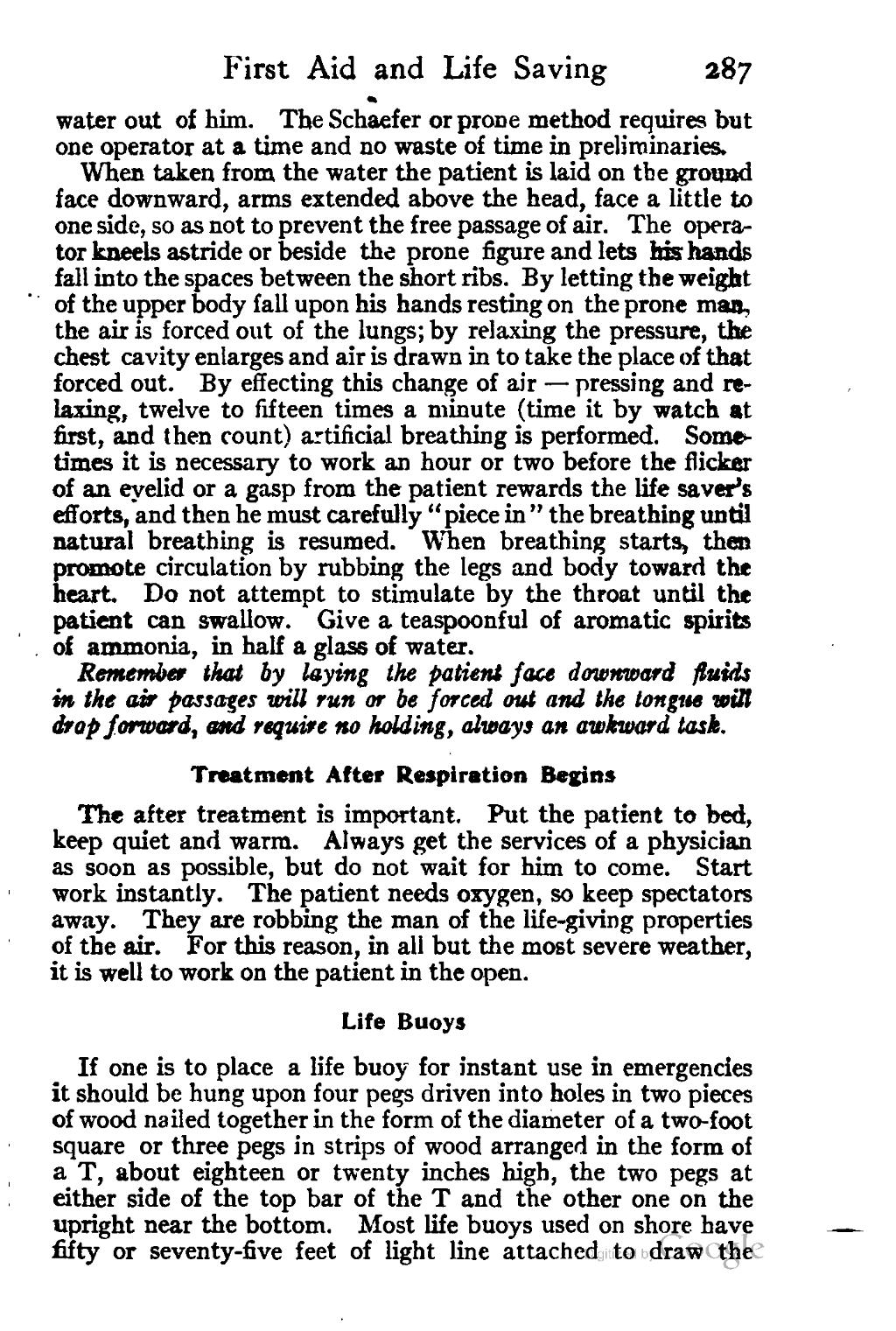First Aid and Life Saving a87 water out of him. The Sch?aefer or prone method requires but one operator at a time and no waste of time in preliminaries. When taken from the water the patient is laid on the grinrod face downward, arms extended above the head, face a little to one side, so as not to prevent the free passage of air. The opera- tor kneels astride or beside the prone figure and lets hi? fall into the spaces between the short ribs. By letting the weight "of the upper body fall upon his hands resting on the prone the air is forced out of the lungs; by relaxing the pressure, the chest cavity enlarges and air is drawn in to take the place of tlmt forced out. By effecting this change of air -- pressing and laxing, twelve to fifteen times a minute (time it by watch at first, and then count) aztifidai breathing is performed. Some? times it is necessary to work an hour or two before the fliclmr of an eyelid or a gasp from the patient rewards the life efforts, and then he must careftdly "piece in" the breathing until natural breathing is resumed. When breathing starts? th? promote circulation by rubbing the legs and body toward the heart. Do not attempt to stimulate by the throat until the patient can swallow. Give a teaspoonful of aromatic spirits
of aremorris, in half a gla? of water.
R?,nemtnw that by laying the patient fact downward l?uids in ttte air passages will run or be forced out and ti?e tong? ds, op forunwd, and r?qui?e no holding, always an a?k'ants'd task. Treatment After Respiration The after treatment is important. Put the patient to bed, keep quiet and warm. Always get the services of a physician as soon as possible, but do not wait for him to come. Start work instantly. The patient needs oxygen, so keep spectators away. They are robbing the man of the life-giving properties of the air. For thi.? reason, in all but the mo?t severe weather, it is well to work on the patient in the open. Lif? Buoys If one is to place a life buoy for instant use in emergencies it should be hung upon four pegs driven into holes in two pieces of wood nailed together in the form of the diameter of a two-foot square or three pegs in strips of wood arranged in the form of a T, about eighteen or twenty inches high, the two pegs at either side of the top bar of the T and the other one on the upright near the bottom. Most Life buoys used on sho?re have fifty or seventy-five feet of light line
